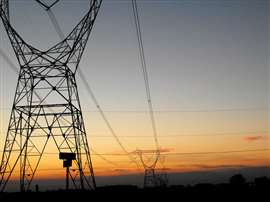New power line guidance for crane operators
29 October 2024
 Starwood Energy proposal to invest US$8 billion in power infrastructure in the US state of Texas
Starwood Energy proposal to invest US$8 billion in power infrastructure in the US state of Texas
New guidance on the safe operation of cranes near overhead power lines has been published by the International Crane Stakeholders Assembly (ICSA).
Guidance –Safe Crane Operation in the Vicinity of Power Lines is a 30 page document offering guidance for crane operations near energised overhead power lines. It is also intended to assist regulatory authorities “when evaluating requirements to prevent power line contact.” It contains a section explaining electricity, including electromagnetic fields, induced voltage, arcing in air and other electrical hazards. The bulk of the guide focuses on risk assessment. Topics include elimination of the hazard, engineering controls relating to crane design, remote operation, power line proximity detectors and use of non-conductive materials,
A large proportion of crane accidents are where a crane boom or hoist rope comes into contact with live overhead power lines. Concern has been growing in some countries at the number of fatal accidents that are avoidable.
Detailed and appropriate site planning and operation is needed to mitigate the risks. A clear warning in the guidance, however, states that the only way to completely eliminate hazards associated with such crane operations is to de-energise and ground the power lines before cranes start operating in the vicinity.
The guidance says, “Therefore, it is necessary to implement a risk management system based on a risk assessment to develop a safe system of work for the operation and-or jobsite. Any changes to the operation or jobsite conditions may require a review and modification of the safe system of work.”
Impossible design
 International Crane Stakeholders’ Assembly (ICSA)
International Crane Stakeholders’ Assembly (ICSA)
Attention was drawn in the European Union last year with the new publication of the European Machinery Regulation. It contains a requirement for mobile machinery such as cranes to be designed in such a way as to prevent the risk of contact with an energised overhead powerline. This is something the manufacturers have long said is impossible.
In Europe that debate is continuing with arguments put forward by the European crane and transport association ESTA and the crane manufacturers. They point out that the development of the laws and national regulations establishing how the new regulation is interpreted in member states must reflect practical reality.
In the ICSA guidance it states that it is not intended to supersede any documents or guidance provided by the crane manufacturer or any local or government regulations, which must be followed. The publication does, however, add further weight to the above arguments put forward.
ICSA’s new document has been reviewed and jointly adopted by the following list of its member associations:
- Association of Equipment Manufacturers [AEM]
- Canadian Crane Rental Association [CCRA]*
- The Crane Industry Council of Australia [CICA]
- The European Association of abnormal road transport and mobile cranes [ESTA]
- European Materials Handling Federation [FEM]
- Japanese Crane Association [JCA]
- Specialized Carriers & Rigging Association [SC&RA].
* CCRA was formerly the Crane Rental Association of Canada (CRAoC). It changed its name in May 2023.
STAY CONNECTED



Receive the information you need when you need it through our world-leading magazines, newsletters and daily briefings.
CONNECT WITH THE TEAM






